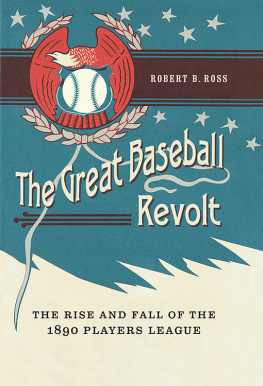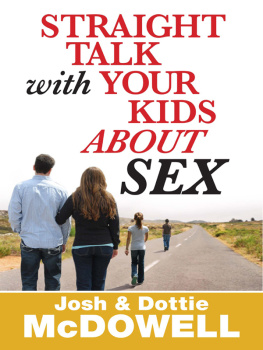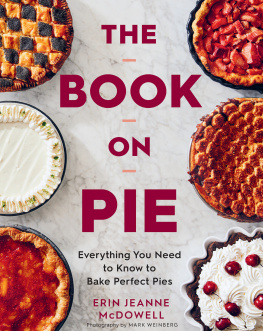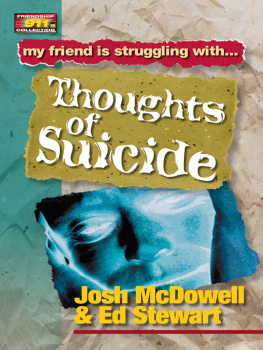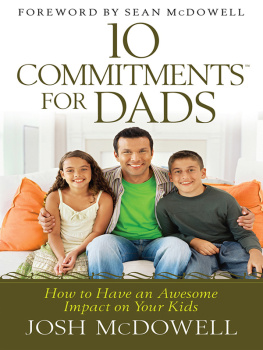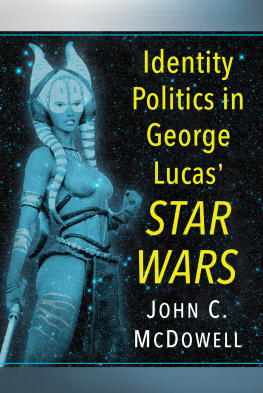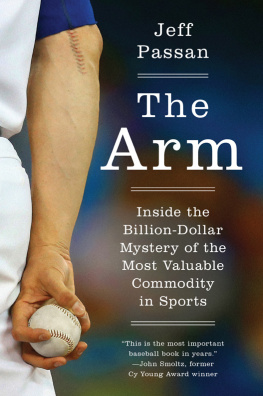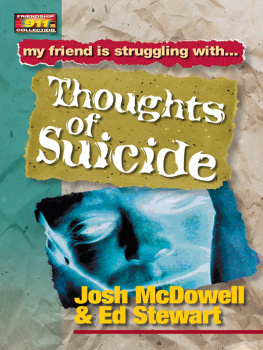Sam McDowell was a six-time American League All-Star pitcher whose career was derailed by alcoholism. After hitting rock bottom in 1980 he launched his recovery and studied psychology, sports psychology, and counseling. He has worked as an addiction counselor in major league baseball for more than forty years.
Martin Gitlin has won more than forty-five awards as a sportswriter, including first place for general excellence from the Associated Press for his coverage of the World Series. He is the author of more than two hundred books on a variety of subjects including many about baseball.
I was gripped by a sense of hopelessness. So I gripped my chrome-plated.38-caliber revolver. Then I placed it to my head. I had concluded that suicide was the only escape from my despair.
The date of my attempt to blow my brains out remains as hazy as the alcoholic fog that controlled my life for years. This chilling moment occurred in the chilly winter after a 1963 baseball season during which I experienced my first bouts with drunkenness and continued failures on the mound as a prized pitching prospect for the Cleveland Indians. My wife Carol Ann had left me and taken our baby daughter Debbie with her. I could not live like that so I decided to die.
My self-absorbed personality would not allow me to consider the consequences. I never reflected upon the anguish my death would have brought my family, friends, and fans. I did not realize that addiction is a disease of escapism that negatively affects the part of the brain that deals with fear, logic, decision making, and chance taking. Feelings of loneliness and misery perpetuated by what I perceived as abandonment by Carol rather than a departure justified by my behavior sent dangerous ideas swirling through my mind. So I pulled the trigger.
Nothing.
In loading the gun after cleaning it, I had unknowingly inserted a dead shell along with live loads. The gun clicked on the dead shell and never fired. I cashed in on a 17 percent survival rate. To this day I do not know why I did not try again. Perhaps my will to live proved stronger than my desire to perish. Perhaps the attempt to take my life was so traumatic that it scared me straight. I recall a vague sense that maybe I could figure out the problem. I believed it just enough to not try again. I just sat there in amazement, stunned. The introspection began. I remember thinking that I could not even do this right.
Whatever the reason, I am today very thankful that fate stepped in. The cost of my ignorance and immaturity was my marriage, career, and years of depression that I could not even identify as depression. But decades after my suicide attempt I finally gained self-actualization that brought happiness and contentment into my life. And I understood the disease that motivated me to try to end my life.
I would not have been alone and miserable that day had I heeded the warnings from Carol Ann, who was, along with her parents, a non-drinker. She had grown wary of my drinking and verbal abuse even though neither had become pronounced. I was only a periodic drinker at that time though I must admit I usually drank to get drunk. Not until the early 1970s did I deteriorate into what I identified many years later as the worst drunk in baseball. I never physically harmed her, though not treating her like a queen as she deserved I would call a form of mistreatment.
But I did not care when she spoke about a relative whose alcoholism and cruelty as a husband put fear in her own heart and mind about me. I did not listen when she questioned my desire to booze it up with neighbors and return a bit more than tipsy. I did not show any tenderness and compassion when she worried aloud about the dynamic of having a professional athlete on the road constantly as a life partner. And I did not try to recognize her overwhelming task as mother, father, mentor, teacher, provider, and disciplinarian before trying in vain to turn some of those roles over to a narcissist like me during the winter. I lived the creed What I Want, When I Want, How I Want. That would eventually apply to my intoxicated trysts with other women.
Instead of seeking to understand her anxieties, I rebelled against them. I convinced myself that her concerns about me deteriorating into someone like her alcoholic relative were pure paranoia. My irrational thoughts turned into action. I persuaded myself that she had left me unduly and that my misery was inescapable. I could no longer fight it.
I was wrong, of course. I needed to show Carol Ann love. But in addicts there is no capacity for true, genuine love. They do not understand it. They are consumed by personal, base desires. I had been as contented as an alcoholic could be with the high school sweetheart who had become my wife and mother of my child. Fortunately God protected them because I could not do so, at least emotionally. To have what most people dream abouta home, family, and athletic careerand destroy it all? That is alcoholism.
The ultimate deed against myself occurred three days after Carol Ann had packed her bags and bolted to the Pittsburgh home of her parents. I had come home drunk on a couple occasions and she felt that her fears were being realized. Her departure made me feel for the first time in my life that something was wrong. That recognition mushroomed in my head to a belief that all hope was lost. I angrily thought, Whats so bad about getting drunk once in a while? Why does my wife not understand me? Im only drinking once or twice a month. There was no way out but leaving this earth. Carol Ann must have had an inkling that I might do something desperate because she asked a neighbor to come over and check up on me. I had yet to attempt the suicide but it must have been at least a bit frightening when my neighbor arrived to find me cleaning all my guns.
I had an impressive collection that included handguns, rifles, and one shotgun. I had begun to purchase firearms in spring training 1963 when my team-mate and future Indians manager Joe Adcock asked me to accompany him on a coyote hunt. I immediately bought a rifle and bullets to go along with western boots. We only hunted twice during that camp but for the next eight springs I arrived early in Tucson to hunt and drink. I then started to hunt in my native Pennsylvania during the offseason and bought a 30/30 rifle for heavily wooded areas as opposed to the wide-open spaces of Arizona. I later began accumulating specialty, collector guns. But it is interesting that as I started to recover from my alcoholism and depression I no longer felt the desire to hunt. I even gave away or sold my guns, though I must admit that before my emotional breakthrough I had hawked guns to get money to pay for booze.
My alcoholism during the winter in which I attempted suicide had not advanced enough for me to understand it as alcoholism. That was not the only problem with which I was afflicted that I did not comprehendthough they were all tied together. Another was depression. It is hard to imagine, given that I had just placed a gun to my head and pulled the trigger, that I did not realize I suffered from clinical depression.
You have to consider the times. Such a term, depression, did not exist then especially in the athletic arena. The number of athletes who realized they were depressed and admitted it publicly could be found by looking in the middle of a doughnut. Back then, depression and other mental or emotional disorders were not openly discussed. Addiction was also considered a mental illness until the 1970s when research proved it to be a disease. Such issues are more openly examined todayathletes have revealed their personal battle against depression in recent years. But even today most people, including athletes, continue to hide it. And they believe there is no light at the end of the tunnel, not realizing there is a solution. That is why the suicide rate remains tragically high.




